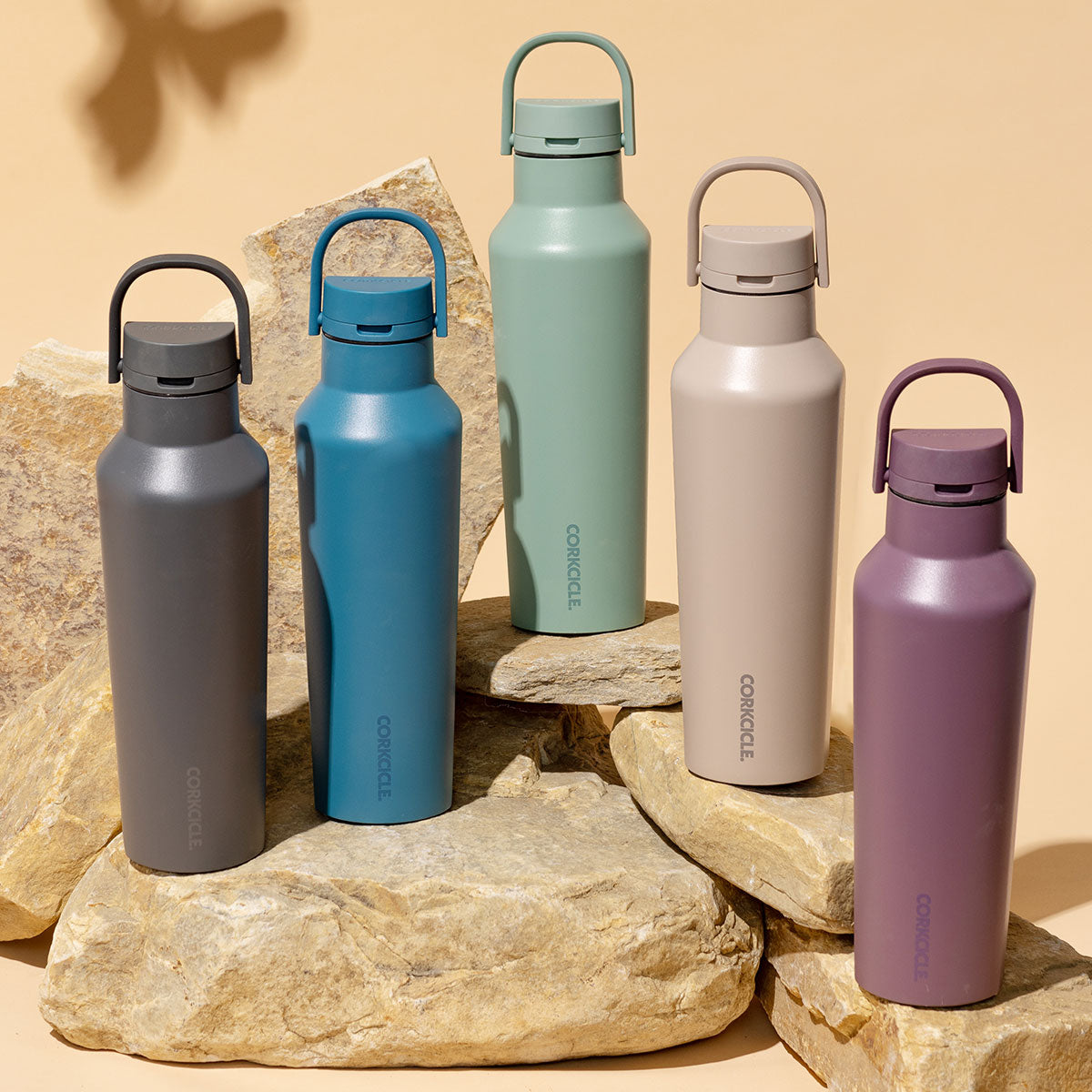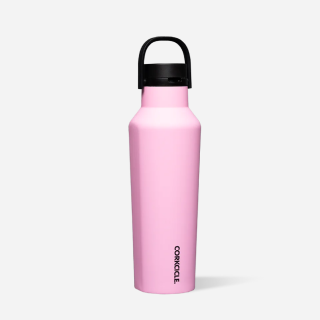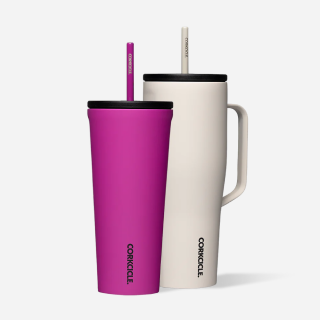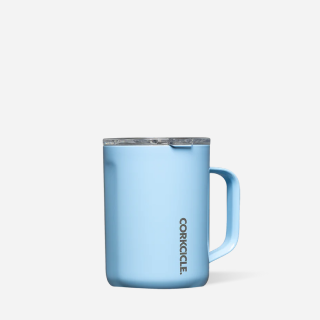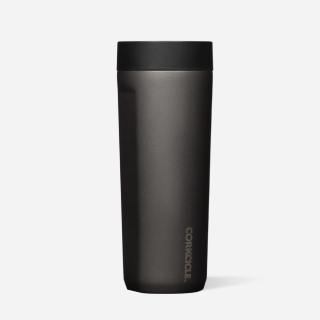We love our trusty lunch boxes and bags. They faithfully carry our favorite meals, keeping them fresh and ready to devour. But here's the deal: proper cleaning is the secret sauce to maintaining their functionality and ensuring our health and well-being.
Whether it’s a Corkcicle Lunchpod or Baldwin Boxer Lunch Box that you choose to tote along every day to keep your food fresh and tasty, it is important to remember that your trusty container or your child’s lunchbox needs its TLC so that it can continue to properly store your favorite snacks.
So today, we take a detailed dive into how to wash a lunch box, from the importance of a clean lunch bag to step-by-step instructions and maintenance tips. So grab your cleaning supplies, and let's get scrubbing!
Why Proper Cleaning Matters
Food Safety First
It can’t be emphasized enough: food safety is an absolute must! Unclean lunch boxes and bags can become a breeding ground for harmful bacteria, putting our health at risk. By maintaining clean containers and a clean lunch bag, we reduce the chances of food contamination and keep our stomachs happy and healthy.
Banishing the Funk
Admit it, we've all opened our lunchbox or cooler bag at one point or another only to be greeted by a not so pleasant odor. Proper cleaning not only eliminates odors but also prevents them from lingering and transferring onto our food. So say goodbye to funky cooler bag and insulated lunch box smells and enjoy your meals with a breath of fresh air.
Preparing for Washing
A good wash starts with being well-prepared.
1. Gather Your Supplies
- Warm water
- Mild dish soap or a vinegar-water solution
- Soft sponge or brush
- Toothbrush (for hard-to-reach spots)
- Baking soda (for tough stains or odors)
- Clean, dry cloth or paper towels
2. Precautions
- Check the manufacturer's instructions for any specific cleaning guidelines for your insulated lunch box or insulated lunch bag.
- If your lunch box has removable parts, detach them before cleaning.
- Empty out any remaining food or liquids and dispose of them properly.
How to Wash a Lunch Box
While washing a lunch box is a simple concept, there are certain steps to follow to ensure you get the best results:
1. Rinse It Out
Start by giving your lunch box a good rinse with warm water to remove any loose debris or food particles. This initial step prepares it for a more thorough cleaning.
2. Get Sudsy
Add a few drops of mild dish soap or a vinegar and water solution to a sink or basin filled with warm water. Create a bubbly concoction that will work its magic on your lunch box.
3. Scrub-a-Dub-Dub
Dip your sponge or soft brush into the soapy water and gently scrub the interior and exterior of your lunch box. Pay extra attention to any stained or dirty areas. You can get into hard-to-reach spots using a toothbrush.
4. Bye-Bye Stains and Odors
Stubborn stains or lingering odors? Sprinkle a little baking soda on a damp sponge or cloth and give those trouble spots a gentle scrub. Allow the baking soda to sit on those areas for a few minutes, and then rinse. Ta-da! Stains and odors, be gone!
5. Rinse and Dry
Thoroughly rinse your lunch box with warm water to remove any soap residue. Then, pat it dry with a clean cloth or paper towels. Ensure that it's completely dry before storing or using it again to prevent mold or mildew growth.
How to Clean a Lunch Bag
Now, let's tackle the cleaning process for those trusty lunch bags and lunch bag totes.
1. Fabric Lunch Bags
- Check the care label for specific insulated lunch bag cleaning instructions.
- If it's machine washable, turn the bag inside out and wash it on a gentle cycle with mild detergent. Air dry it afterward.
- If it’s not machine washable, gently wipe the interior and exterior with a damp cloth soaked in warm soapy water. Rinse and air dry.
2. Insulated Lunch Bags
- Remove any removable inserts or plastic linings.
- Wipe the interior and exterior with a cloth or sponge dipped in warm soapy water. Pay attention to seams and folds where dirt can accumulate.
- Rinse the bag thoroughly and let it air dry completely before reassembling.
Dealing with Spills and Stains
Accidents happen, especially when it comes to lunchtime.
For liquid spills, quickly blot the affected area with a clean cloth or paper towel to absorb as much moisture as possible. Then, follow the cleaning instructions mentioned earlier.
Stains from food like tomato sauce or mustard? Scrub these off with a simple mixture of baking soda and water.
Maintenance and Care Tips
To keep your lunch boxes and bags in top-notch condition, follow these maintenance and care tips:
1. Regular Cleaning Routine
Make washing your lunch containers a regular part of your routine. Aim to clean them after each use to prevent food buildup and potential bacteria growth.
2. Air It Out
After cleaning, leave your lunch box or bag open to air dry completely before closing or storing it. This helps prevent moisture and mold from taking hold.
3. Storage Matters
Choose a cool, dry place that is away from direct sunlight for keeping your lunch containers. Proper storage ensures their longevity and keeps them ready for your next delicious meal.
Other Frequently Asked Questions (FAQs):
How often should I clean my lunch box?
It's recommended to clean your lunch box after each use. Cleaning it regularly helps in keeping food residues, odors, and bacteria from building up and ensures the container remains safe and hygienic for your meals.
Can my lunch box be placed in the dishwasher?
Check the manufacturer's instructions for your specific lunch box. While some lunch boxes are dishwasher-safe, others may require hand washing to maintain their quality. Dishwashers with high temperatures and strong detergents may cause damage to certain materials or affect the insulation properties of insulated lunch containers.
What is the best way to remove food stains from a lunch bag?
For fabric lunch bags, start by blotting the stain with a clean cloth or paper towel to absorb excess moisture. Then, gently scrub the stained area using a mild detergent or stain remover. Rinse thoroughly and allow the bag to air dry. You can use a paste made of baking soda and water on tougher stains, letting it sit for a few minutes after applying, and then wash as usual.
How do I get rid of unpleasant odors from my lunch box?
To eliminate odors, start by washing the lunch box with warm soapy water. Then, rinse it thoroughly and let it air dry completely. For persistent odors, you can try placing a small open container of baking soda inside the lunch box overnight. Baking soda helps absorb and neutralize odors. Alternatively, you can use a few drops of lemon juice or vinegar on a cloth to wipe the interior of the lunch box, as they have natural deodorizing properties.
Is it safe to use bleach for cleaning lunch containers?
It's generally not recommended to use bleach for cleaning lunch containers, especially those made of plastic. Bleach can be harsh and may leave a lingering odor. Instead, opt for mild dish soap, baking soda, vinegar, or other natural cleaning solutions that effectively clean without the potential risks associated with bleach.
Can I wash an insulated lunch bag in the washing machine?
Insulated lunch bags typically have specific washing machine care instructions provided by the manufacturer. Some insulated bags are machine washable, but it's essential to check the care label and follow the recommended instructions. If the bag is not machine washable, wipe the interior and exterior with a cloth soaked in warm soapy water, rinse, and air dry.
How can I prevent mold growth in my lunch box?
To prevent mold growth, ensure that your lunch box is thoroughly dry before storing it. After washing, air dry the lunch box completely, including any crevices or hard-to-reach areas. Avoid sealing or closing the lunch box if it's still damp. Additionally, store your lunch box in a cool, dry place, away from excessive moisture or humidity.
Are there any natural cleaning solutions for lunch containers?
Yes! There are many natural cleaning solutions you can use. For general cleaning, a mixture of warm water and mild dish soap works well. Vinegar, lemon juice, or baking soda can be used for stain removal, odor elimination, and disinfection. These natural alternatives are effective and safe for most lunch containers.
Should I air dry or towel dry my lunch box?
It's best to air dry your lunch box after washing. Towel drying may leave behind lint or fibers, which can be less desirable. Allow the lunch box to air dry completely, ensuring there is no moisture trapped inside before storing it. Air drying also helps prevent the growth of bacteria or mold that can occur in damp environments.
By following the previously mentioned steps and tips, you can make sure that your work lunchboxes are always fresh, safe, and suitable for keeping your meals. Remember, proper cleaning not only extends the lifespan of your lunch boxes and bags but also keeps your health in check. So, embrace the joy of clean lunch containers, and let your meals shine bright!
